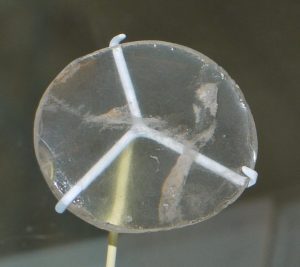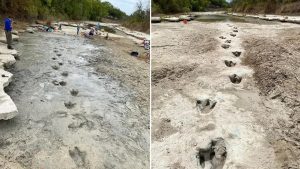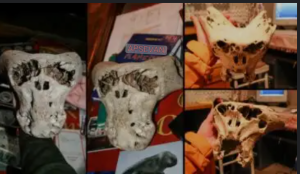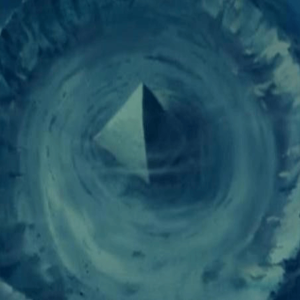700-Year-Old Moai Statues Irreparably Damaged by Fire on Easter Island

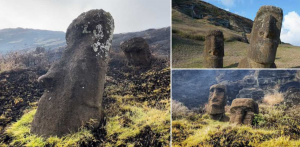
A shocking case of possible arson, still officially being called a forest fire, has caused irreparable damage to the ancient moai statues on Easter Island. The iconic towering stone heads and other archaeological elements have been charred by a fire, with “consequences going beyond what the eyes can see”.
““More than 100 hectares (247 acres) were affected in the Rano Raraku sector which includes the wetland and moai sector,” according to a statement by the City of Rapa Nui on its official Facebook page on Thursday.
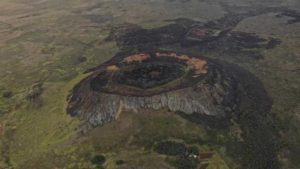
The fire started after an eruption of the Rano Raraku volcano, but authorities believe government negligence contributed as well. The fire burned over 100 hectares (247 acres). (Municipality of Rapa Nui )
The fire was initially caused by an eruption of the nearby Rano Raraku volcano earlier this week on Monday, razing more than 100 hectares (247 acres) of the famous island. The damage eventually spread to the famed stone-carved moai statues, created by the Polynesian tribes of the same name over 500 years ago, CNN reported.
The area immediately around the volcano is a UNESCO World Heritage Site and part of a national park, containing 386 statues in total, as well as a nearby quarry which was used to construct the sculptures.
Rapa Nui Mayor Pedro Edmunds Paoa told the Chilean broadcaster Radio PAUTA that he believed the fire wasn’t an accident. “And that is created by human beings, it is not an accident,” Edmunds Paoa said in Spanish in the interview.
“All the fires on Rapa Nui are caused by human beings. There is no money to prevent fires on Easter Island in the more than 32,000 archaeological sites. To prevent fire, we need to have guards permanently at the sites,” he added. He explained further that the statues that were semi-buried were saved by the soil, but those on the surface were damaged considerably. Unfortunately, the cracking of the “original and emblematic stone” cannot be repaired. ”
The Rapa Nui mayor blamed the Chilean government for not having provided enough resources or an active fire-prevention plan. He said the state has been negligent in its role and responsibilities, including inadequate protection and carelessness about priceless heritage. A general shortage of volunteers also hindered firefighting efforts. The government announced on Friday that there will now be a permanent forest brigade on Easter Island.
“For us it’s super painful to see how the Moai burned,” said Francisco Haoa, a representative of the Rapa Nui people, adding that the statues already face slow damage from rain, sun and wind. “And the fire accelerates that damage to the Moais.” He is also referring to the more than 300 ceremonial platforms and thousands of structures that are connected to agriculture, funeral rites, housing and production – a vital anthropological lens into the lives of the ancient Moai.
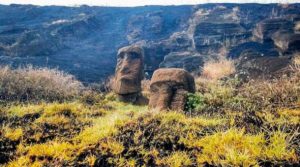
The moai statues were already subject to deterioration due to natural exposure, but the recent fire has caused additional damage. (Municipality of Rapa Nui)
The park is closed again until authorities investigate the source of this fire; it had just reopened two months ago after two years of the COVID pandemic. It is typically visited by thousands of tourists every year.
The island lies 3,500 kilometers (2,175 miles) off the west coast of Chile, in the area known as eastern Polynesia, and is home to more than 1,000 stone statues with giant heads. According to a Gizmodo report, the territory is one of the most isolated inhabited islands in the world – only 5,000 people live on the island. The monolithic human figures , carved from volcanic ash and basalt, are dated to between the 10th and 16th century, and were created by the island’s first settlers.
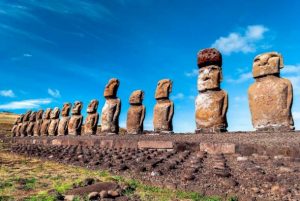
The moai statues were carved from volcanic basalt rock by the Moai people, more than 500 years ago ( thomaslusth / Adobe Stock)
The heads are so large that in most cases they comprise close to 3/8th of the statue; they are chiefly the living faces ( aringa ora ) of deified ancestors (aringa ora ata tepuna ). The statues average 4 meters (13 feet) high; in fact, it is not uncommon to find statues as tall as 19.8 meters (65 feet)!
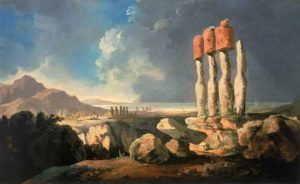
A painting of the moai statues (circa 1774) by British explorer William Hodges, gives a glimpse of their earlier condition (Public Domain)
The ancestral statues have been linked to ritual activities, a focal point for communities, and for a long time, their precise location on the island remained a mystery, according to a Guardian report from early 2019. That study identified that the structures were typically found close to sources of freshwater. This is the best explanation as to why the statues are found inland, and on the coast.
“What is important about it is that it demonstrates the statue locations themselves are not a weird ritual place – [the ahu and moai] represent ritual in a sense of there is symbolic meaning to them, but they are integrated into the lives of the community,” said Professor Carl Lipo from Binghamton University, who was lead co-author of the 2019 study on moai statues .”
Additional details will emerge from this story as the extent of the damage is revealed, and local authorities determine what, if any, repairs may be possible.

